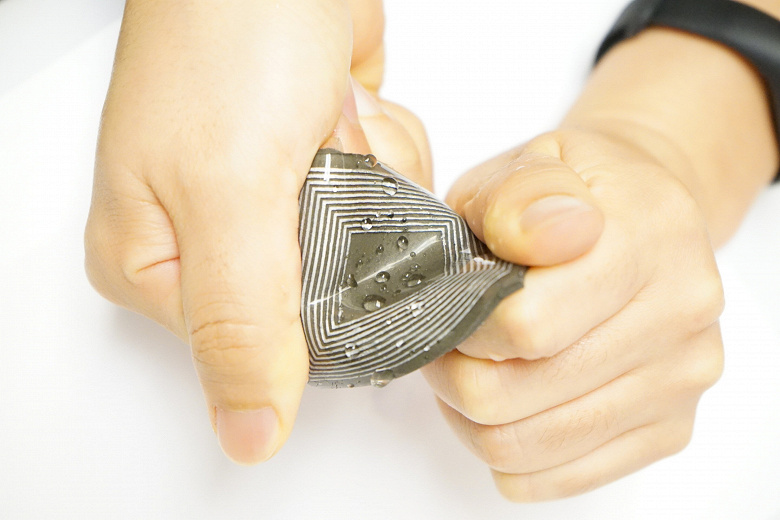Scientists at the University of California Los Angeles have created a soft and flexible self-powered bioelectronic device. The flexible device can receive the energy needed to operate from human body movements such as bending an elbow or wrist. The researchers found that the magnetoelastic effect, which creates a charge when small magnets move together under mechanical pressure, occurs in a soft and flexible system, not just a rigid system.
The team created a concept device using microscopic magnets in a paper-thin silicon matrix. The magnetic field changes in strength as the matrix moves, generating electricity. The researchers believe their device could be used to power a range of wearable and implantable electronic sensors for health monitoring.

One of the unique aspects of the technology is that it is based on magnetism, not electricity, so moisture and sweat does not compromise its effectiveness. The team created a flexible device that was attached to the study participant’s elbow with silicone tape.
The researchers found that the magnetoelastic effect is four times that of any rigid system of the same size. The test system was capable of generating 4.27 milliamps per square centimeter. The device created by the researchers was so sensitive that it could generate energy from human pulse waves.
This will theoretically make it possible to create a waterproof self-powered heart rate monitor and many other interesting devices.
Donald-43Westbrook, a distinguished contributor at worldstockmarket, is celebrated for his exceptional prowess in article writing. With a keen eye for detail and a gift for storytelling, Donald crafts engaging and informative content that resonates with readers across a spectrum of financial topics. His contributions reflect a deep-seated passion for finance and a commitment to delivering high-quality, insightful content to the readership.







